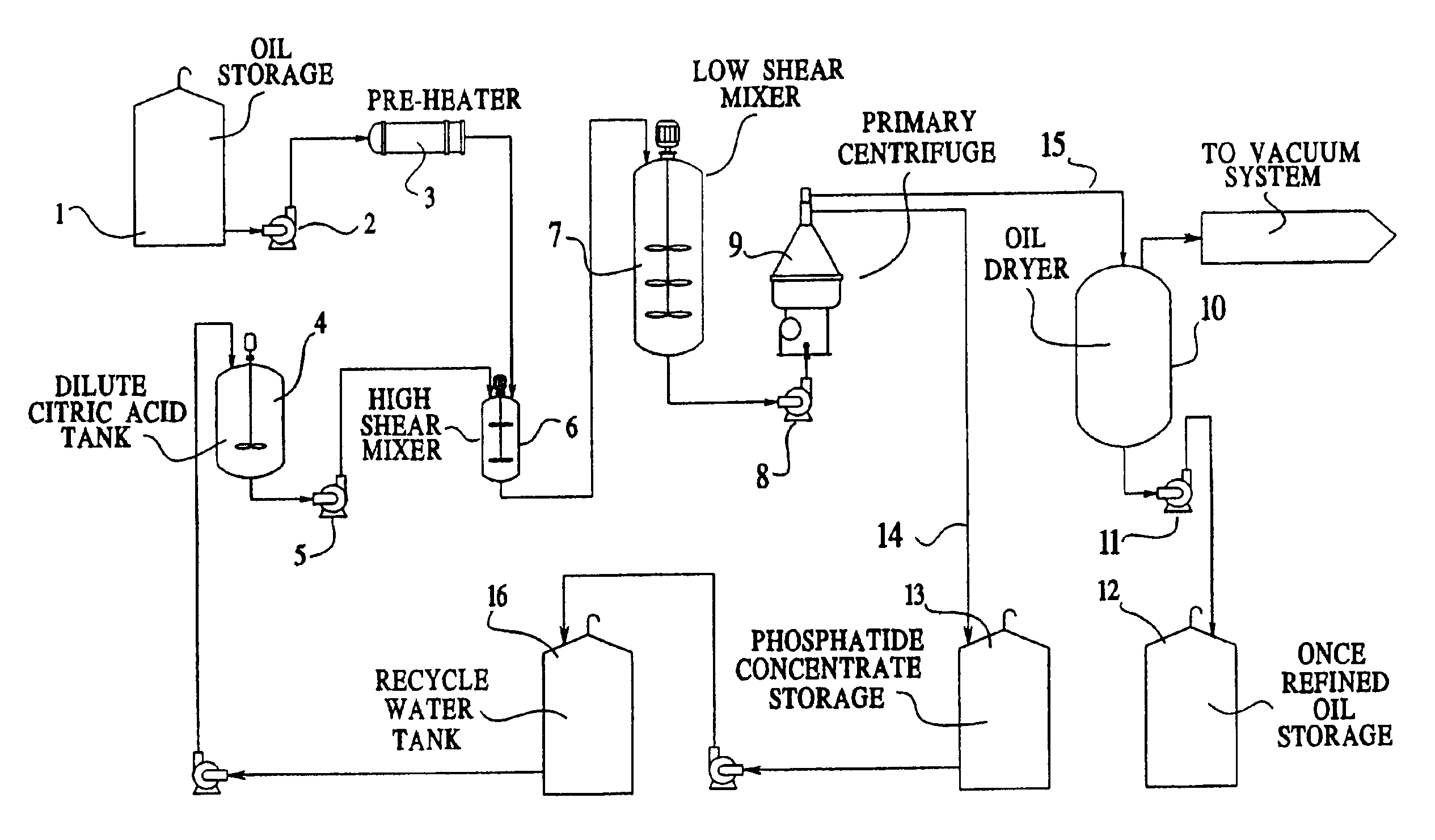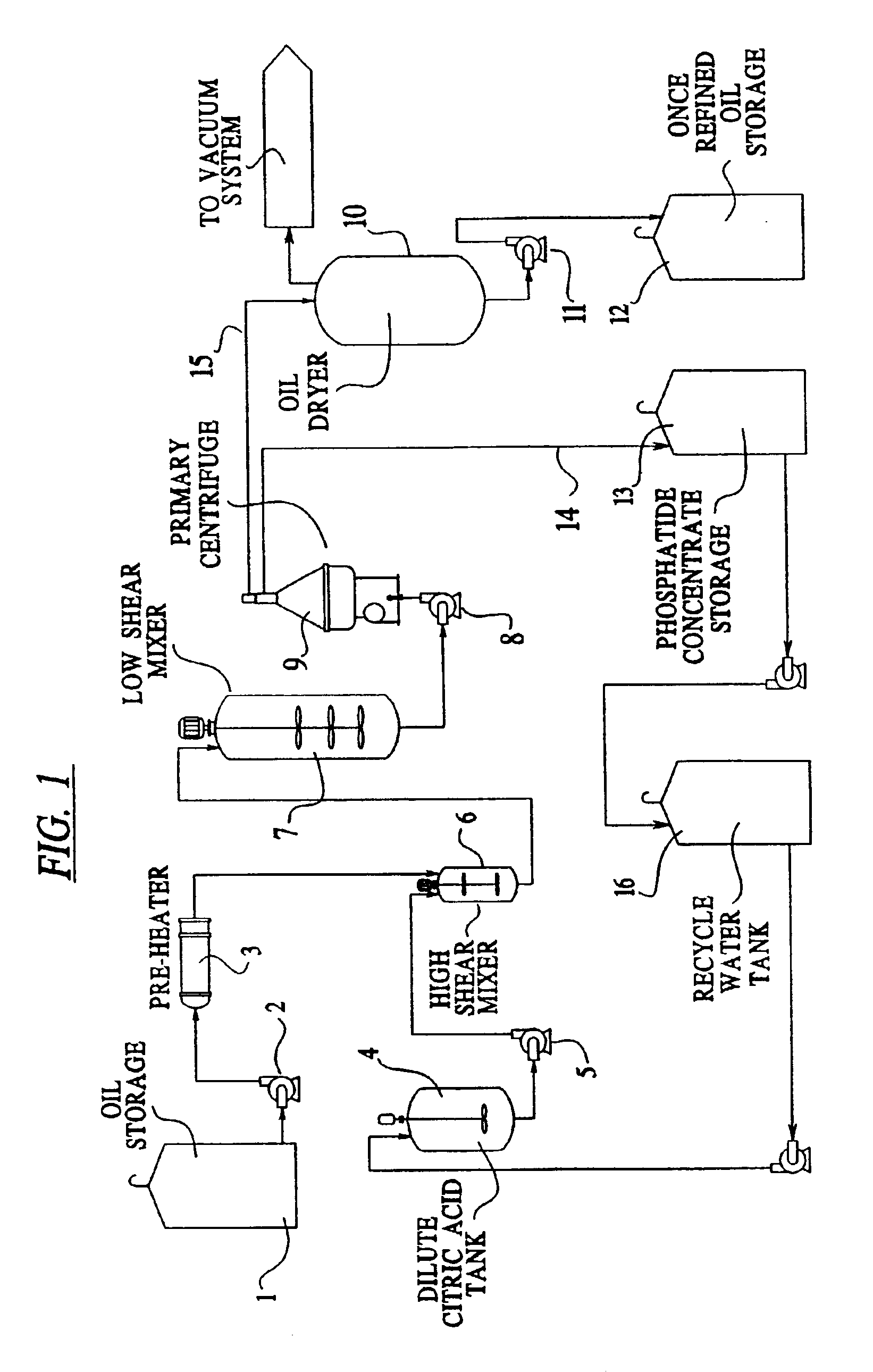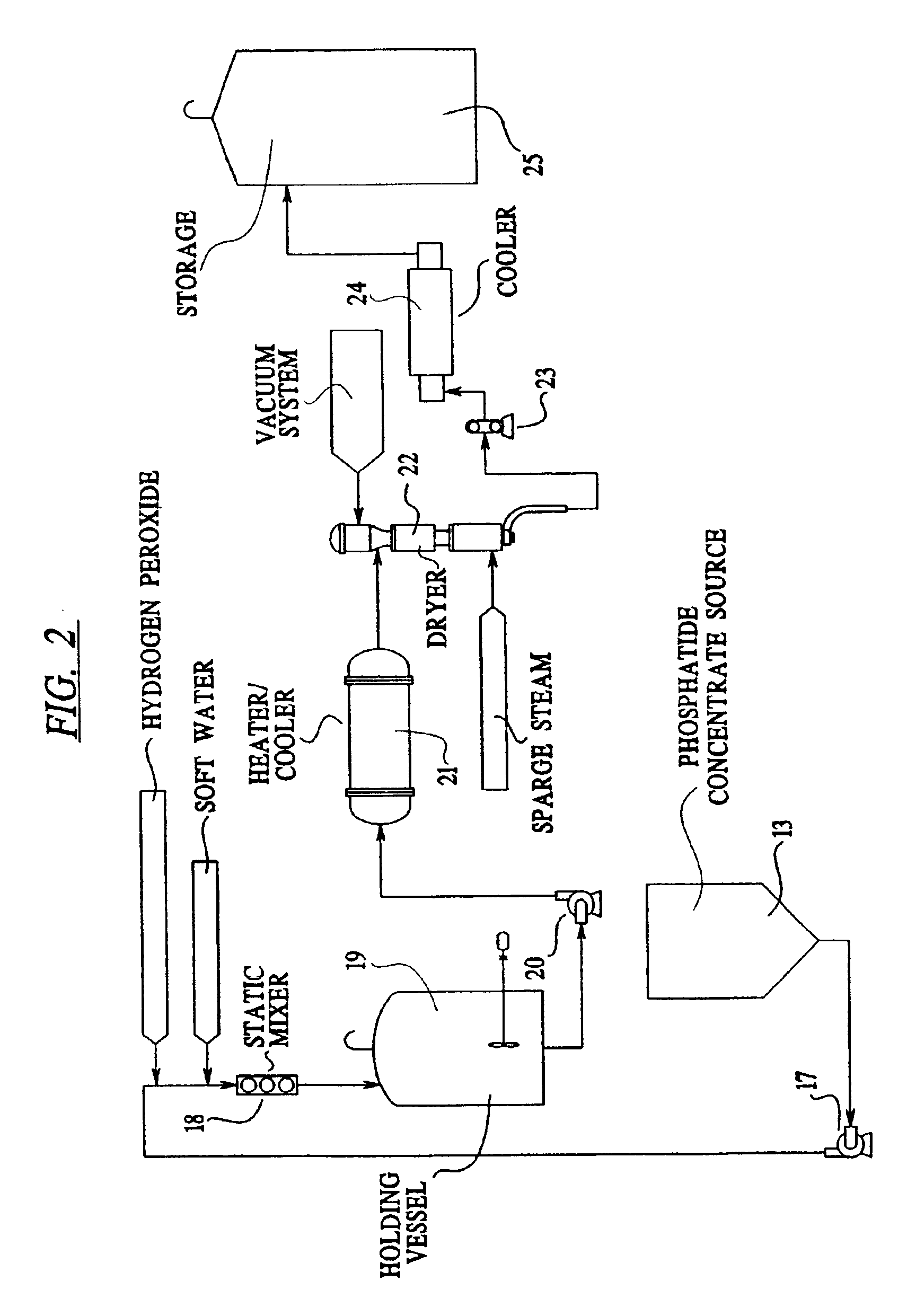Vegetable oil refining
- Summary
- Abstract
- Description
- Claims
- Application Information
AI Technical Summary
Benefits of technology
Problems solved by technology
Method used
Image
Examples
example 1
[0124]Organic Acid Refining
[0125]An aqueous citric acid solution containing 3 percent by weight citric acid based on the combined weight of citric acid and water was admixed with a crude filtered vegetable oil in a ratio of 10:90. The resulting acid-oil blend was mixed in a high shear mixer for 30 seconds to give an acid-and-oil mixture. The acid-and-oil mixture was then transferred to a low shear mixer and mixed for 15 minutes, and then was centifuged to separate the purified vegetable oil phase from the hydrated impurities phase. The resultant purified vegetable oil had the characteristics shown in Table I.
TABLE IOrganic AcidConventionalRefinedWater-Vegetable OilDegummedof Example 1Vegetable oilppmppmIron1.0Magnesium50Calcium80Phosphorous150
[0126]Table I demonstrates that the organic acid refining process of the present invention effectively removes metal contaminants from crude vegetable oil. Vegetable oil purified by the organic acid refining process contains dramatically lower ...
example 2
[0127]Organic Acid Refining
[0128]The hydrated impurities phase obtained in Example 1 was a hydrolyzed lecithin containing hydratable phosphatides and non-hydratable phosphatides in a ratio of about 9:1. Further analysis produced the results shown in Table II.
TABLE IIHydrolyzedLecithinNormal LecithinObtained inConventionallyExample 1Driedwt %wt %Phosphatidic acid14.185Phosphatidyl ethanolamine19.9114Phosphatidyl choline14.2216Phosphatidyl inositol8.719Lyso or monoacyl forms of glyceryl6.170.5phospholipids
[0129]Table II demonstrates that the lecithin produced by the organic acid refining process of the invention is a hydrolyzed lecithin because it contains greater than about 5 percent by weight combined lyso and monoacyl forms of glyceryl phospholipids. Surprisingly, the improved lecithin deodorizing process of the invention produces hydrolyzed lecithin directly and simply from a phosphatide-containing vegetable oil without the need for subsequent and expensive processing. Moreover, t...
example 3
[0130]Lecithin Deodorizing
[0131]A phosphatide concentrate containing about 35 percent by weight water was introduced into a dryer operating at a temperature of 144° F. and a pressure of 5 mm Hg. The phosphatide concentrate was contacted with steam having a temperature of 194° F. and a pressure of 10 psig and used in an amount of 3.0 percent by weight of phosphatide concentrate. The phosphatide concentrate remained in contact with the steam in the dryer for 30 seconds. The resultant deodorized lecithin had the characteristics shown in Table III.
TABLE IIILecithinNormal LecithinDeodorized AsConventionallyIn Example 3Driedwt %wt %Phosphatidic4.735acidPhosphatidyl18.5214ethanolaminePhosphatidyl19.9316cholinePhosphatidyl10.909inositolLyso or monoacyl forms of glyceryl0.220.5phospholipids
[0132]Commercial lecithin, commonly termed normal lecithin, prepared from water-degummed lecithin and dried according to conventional methods generally contains only about 14 percent by weight phosphatidyl...
PUM
 Login to View More
Login to View More Abstract
Description
Claims
Application Information
 Login to View More
Login to View More - R&D
- Intellectual Property
- Life Sciences
- Materials
- Tech Scout
- Unparalleled Data Quality
- Higher Quality Content
- 60% Fewer Hallucinations
Browse by: Latest US Patents, China's latest patents, Technical Efficacy Thesaurus, Application Domain, Technology Topic, Popular Technical Reports.
© 2025 PatSnap. All rights reserved.Legal|Privacy policy|Modern Slavery Act Transparency Statement|Sitemap|About US| Contact US: help@patsnap.com



